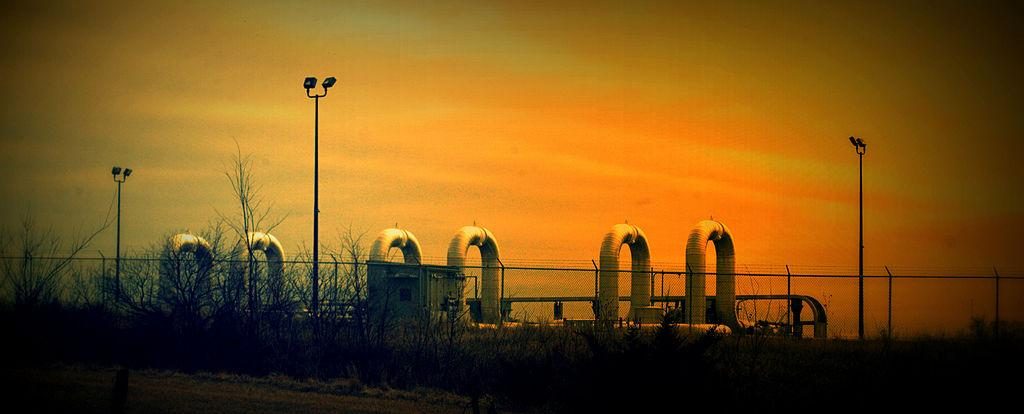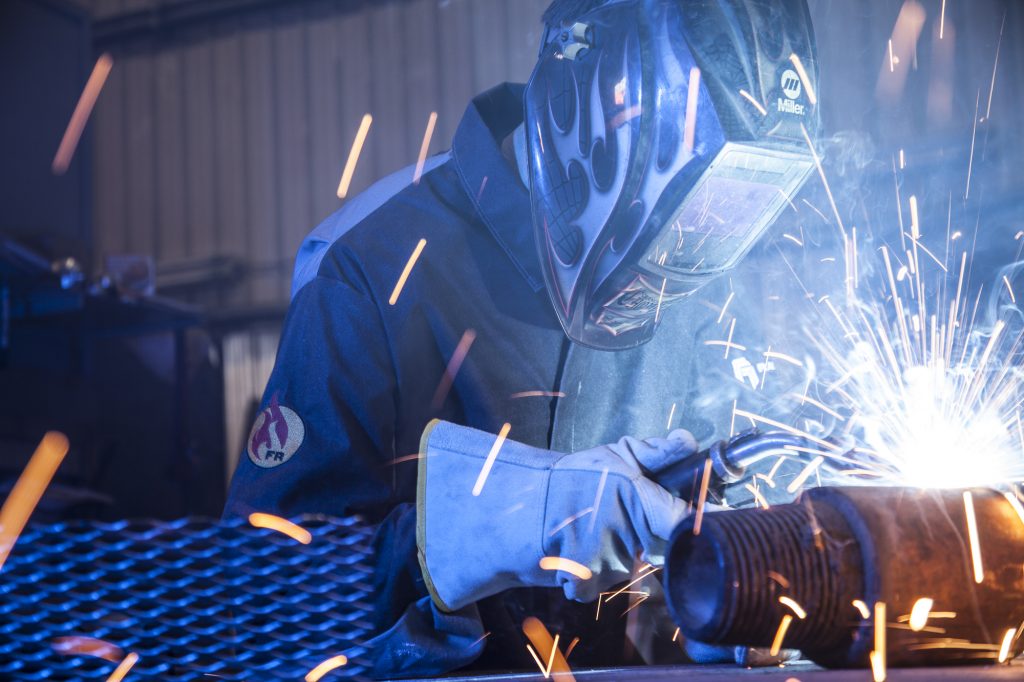Category: Uncategorized
8 Tips to a Successful Shutdown/Turnaround
An Economic Outlook: The North American Oil and Gas Industry in 2020
Coveralls: Quality Over Cost When Your Life is on the Line
Everything You Need To Know About High Visibility Safety Coveralls
Bump Up Your Cleaning Budget, Save on Coverall Purchases!
At Goodfish We Aren’t Just Cleaning Coveralls!
Oil & Gas Industry in Canada – Current State and Future Outlook
As far as the issue of energy security is concerned, Canada holds an enviable position among world nations. The domestic oil & gas industry is so huge, it is a vital component of the entire North American economy. Canada is only behind Saudi Arabia and Venezuela in the table of nations with the largest proven oil reserves. Besides oil, it is also one of the largest producers of natural gas in the world, with proven reserves that rank among the top 20 across the globe. Canada is rather unique among the nations with proven petroleum and natural gas reserves. Of its estimated 167.7 billion barrels of crude oil reserves, conventional oil accounts for just 4.3 billion barrels. The rest 163 billion barrels are found in the form of oil sands, which is classified as an unconventional source of oil along with shale oil and tight oil. Canadian oil sands account for nearly 64% of its total oil production (2017), with daily production exceeding 2.7 million barrels. The province of Alberta accounts for the vast majority of oil sand deposits, located in Athabasca, Peace River, and Cold Lake regions. Saskatchewan is another province with proven oil sand deposits. Canada also has enough natural gas to meet its domestic consumption for the next 300 years. To put things in perspective, 30% of the country’s energy needs are met by its natural gas production, which is also ranked the fourth highest in the world. Gas deposits are found all across Canada, in virtually every province from Nova Scotia to Newfoundland, Quebec, Alberta, Yukon, and British Columbia. With such massive mineral wealth, it is not surprising that the Canadian energy industries contribute quite a lot to the nation’s economy. Altogether, the energy industry in Canada contributed nearly 11% of the GDP in 2017, with oil and gas industries accounting for close to 60%. In a country with a GDP in excess of 1.6 trillion US dollars, that is quite an impressive figure indeed. According to Statistics Canada, extraction of oil and gas alone make up around 7% of the Canadian GDP, which is around the same as the banking and insurance services in the country. This is the highest it has ever been since 1998, indicating strong and sustained growth in the sector in the last two decades. As local production far exceeds demand, Canada is a huge exporter of oil and natural gas, with the vast majority of it headed south of the border into the US. The exports accounted for around 20% of total goods in 2017, worth $97 billion, with the US alone accounting for 91% of that. The industry contributes around $16 billion in the form of taxes to the Federal government as well as provincial and local counterparts, which is around 11% of the total government earnings. The energy sector in Canada employs and 276,000 people, accounting for 4.9% of the total national employment. Oil and natural gas extraction provide 0.4% of this, with 67,000 jobs generated directly. And when you factor in indirect employment through activities like construction, refining, transportation, and others, the total number of jobs generated exceeds 528,000 in 2017. An interesting fact of note here is the current trend in domestic production of crude oil and natural gas: experts studies indicate that production has already exceeded existing infrastructure capacities in Canada. The situation of pipelines is so serious that Canadian oil companies are being forced to sell crude at a significant discount to US buyers due to the increased cost of rail transportation. Capital investment in the domestic infrastructure has fallen in recent years, resulting in the present bottleneck. But the global oil industry showing signs of revival with prices bouncing back in recent years. Soon this trend should also reflect increased investment in oil and natural gas related industries in Canada in the near future. This would add even more jobs to the Canadian economy within the foreseeable future. The increase in jobs would also result in increased demand for essential equipment, like protective clothing. In an industry where fire hazards are a constant threat, flame retardant clothing is mandatory for a significant segment of the workforce. Local manufacturers like Goodfish have the expertise and experience to contribute to the growth of the Canadian oil and gas industry. As an enterprise wholly owned by the Whitefish First Nation in Alberta, Goodfish is also committed to responsible and sustained development, a vital requirement in an industry which has to work harder than most others to limit its ecological impact.

The Extent Of Oil & Gas Reserves in Canada
Oil & Gas Contributions to Canadian Economy

A Potent Employment Generator with Room for Growth


The Real Life Story Of One Man Saved (And 6 Other Reasons Why Safety Matters)
It is said that “safety doesn’t happen by accident.” Staying safe has to be a conscious decision, and efforts must be made to ensure that you are well-protected on the job, as well as the workplace.
No one knows this better than safety specialist Randy Burton who, in 2008, found himself living his worst nightmare. Without warning, Burton’s 505 truck suddenly caught fire and the leaping flames engulfed the vehicle’s cabin within moments – while he was inside. Fortunately for him, Burton survived the blaze, albeit with severe burn injuries. “The surgeon asked me what I was wearing that day: Goodfish coveralls. He told me that if I wasn’t wearing FR coveralls, I would have had about 98 percent of my body burned. No one survives that. He said I could thank my coveralls for saving my life,” says Burton.
The incident served to show the importance of flame-resistant (FR) clothing, such as what Burton was wearing that fateful day, in saving lives. It prompted him to take it upon himself to propagate the need for safety. “Since my accident, I have developed a deep passion for safety. Telling my story helps me to heal as well, as it helps the people listening to be more aware of the importance of keeping themselves safe,” adds Burton.

Source: Pixabay.com
What the Statistics Say
According to the statistics compiled by Canadian workers compensation boards, there were 904 work-related fatalities in 2016. In addition to these, 241,508 claims were received for lost time caused by a work-related disease or injury. It is likely that the number of workers who suffered injuries is higher, since these figures are only incidents that have been reported to the compensation boards, and subsequently accepted.
These numbers serve as a reminder that there are a good number of things that you can do to prioritize safety issues at the workplace. Besides avoiding deaths and injuries, there are some other reasons you need to look at safety measures:
- Corporate Financial Benefits
The aim of a business is to make money and putting in safety measures helps you do this. Accidents at the workplace can result in extremely high insurance and legal costs to your business. A safe workplace will have extremely low rates of injury and illness and this in turn, translates into higher profit margins.
- Enhanced Worker Productivity
Safe workers are happy workers and when people are happy, they tend to perform better. Lower rates of absenteeism and reduced attrition can boost productivity at the organization. Involving your employees in the program by seeking their opinion, and constituting committees for redressal of grievances related to safety issues at the workplace, you are showing them that you care.

Source: Pixabay.com
- Minimize Damage to Property
Even if there are no injuries to employees, certain accidents such as those involving electrical equipment or other machinery can result in property damages that can be expensive to repair or replace. Training employees well in the use and maintenance of such equipment and machinery can mitigate risks as well as reduce associated costs.
- Improves Service/Quality of Product
The link between quality of service or products and the safety record of the company is a strong one. When employees get to work in a safe environment that is free of distractions and hazards such as debris lying around or entangled wires, they tend to be more focused and thus, quality is assured.
- Protects Corporate Reputation
A company with a good safety record instills confidence in customers and investors alike. This conveys the message that being a company which worries about the health and well-being of its employees it is likely to feel the same way about others too. This enhances the brand value and the good will of the company in the market.
- Retains Customer Loyalty
The safety record of your workplace has an impact on your customers and is not restricted to your company and its employees. When there are a significant number of injuries, the pace of work is affected and you are likely to find it difficult to meet the requirements of your customers. If this happens, you cannot expect your customers to wait around for their orders to be completed and it is likely that they will switch loyalties.
Providing a safe working environment for every employee is the duty and moral responsibility of the employer. While the risks and dangers involved at the workplace will vary depending on the type of industry, it is important for organizations to adhere to the safety regulations and guidelines that pertain to their specific sector for all the reasons outlined here.

Top 5 Oil And Gas Related Projects in Alberta

Alberta is ranked Canada’s leading oil and natural gas producer and has vast oil sands deposits. Keeping this in mind, the government of Alberta has raised its financial incentives by $600 million for investment in petrochemical development related to oil and gas in the region. This will be offered in the form of future royalty credits and is in addition to the $500 million announced in March last year. Another $500 million had been separately earmarked at the time for loan guarantees. The government has received over twenty applications for such investments that are likely to be in excess of $60 billion.
The following are some significant oil and gas industry projects that are underway or have been recently completed and have benefited from these measures or are likely to do so in the near future.
1. Heartland Petrochemical Complex
Heartland Petrochemical Complex is a $3.5 billion dollar facility being developed by Inter Pipeline to use low-cost propane to churn out 525,000 tons of polymer grade propylene annually. Construction is underway and the complex is expected to be completed and operational by the end of 2021. The plant is slated to receive $200 million in royalty credits under Alberta’s Petrochemical Diversification Program. The total number of direct and indirect jobs created in the region during the construction process is expected to be at least 13,000 over four years.
2. Pembina Gas Plant Expansion
Early in 2018, Pembina Pipeline Corporation stated that it would set aside around $120 million for the construction of new facilities for terminalling and fractionation. Expected to be operational by 2020, the facility will be at Pembina’s existing Empress extraction plant near Medicine Hat. Pembina’s fourth quarter 2017 investor report claims that this will help boost the company’s NGL volumes while ensuring greater propane supply access.
3. Orion Thermal Project Expansion
In October 2018, Osum Oil Sands Corp. completed its expansion project at the Orion Thermal Project which is situated near Cold Lake. The Phase 2B and 2C expansions which were completed ahead of schedule have led to a 30 percent increase in steam capacity at the SAGD facility. The company expects to see the capacity nearly double by the end of third quarter of 2019 and is also likely to proceed with its 2D expansion plans. The Orion property was purchased by Osum from Shell in 2014 at a price of $325 million.
4. Trans Mountain Pipeline Expansion
This project that aims to extend the Trans Mountain service from Strathcona County, Alberta, to Burnaby, British Columbia, had to suffer starting delays due to challenges in procuring necessary permits. Spearheaded by Kinder Morgan, this $7.4 billion project is now likely to be completed in September 2020 but it can be 2022 before the new pipeline is fully operational. This project involves twinning of the original 1,150 km pipeline that was built in 1953 to enhance the nominal capacity of the system to 890,000 barrels per day from the existing 300,000 barrels.
5. MEG Energy Oilsands Expansion
In May 2018, MEG Energy announced that it had commenced expansion of its Christina Lake in situ oilsands project. Known as the Phase 2B Brownfield Expansion, the $275 million project is expected to be completed in 2020. The company has already capacity contracted the increased oil production volumes on the Seaway Pipeline and Flanagan South pipeline headed for the U.S.

Source: pixabay.com
With such major projects making inroads into the Alberta oil and gas industry sector, the region seems poised for an economic upswing. While all these projects have been undertaken by various companies with different budgets, the one thing common to all is the employment opportunities each of these have generated. A larger workforce means greater responsibility on the employer to ensure the safety and well-being of employees given the nature of the industry.
Protective clothing such as flame-resistant (FR) coveralls is a must for every worker in the sector. It is essential to ensure that such apparel is manufactured in keeping with the regulatory requirements as prescribed by agencies such as the Canadian General Standards Board (CGSB) and the Canadian Association of Petroleum Producers (CAPP). Durability and comfort must be kept in mind when choosing this type of work wear as also the fit and type of material used. Coveralls intended for industrial usage that are flame-resistant while offering arc flash protection such as those manufactured by Goodfish are likely to be your best bet.
Ensuring proper maintenance of FR apparel can help retain the effectiveness of the garment. Being aware of the risks in the industry and taking all necessary precautions is the best way of turning opportunities into successful ventures.
PARTICIPATING IN UPCOMING SHUTOWNS OR TURNAROUNDS?
Goodfish Lake has you covered. Not only do we offer the best Turnaround coveralls in the industry but we have Largest Industrial Drycleaning facility in Canada
- The only company that Manufactures Coveralls while featuring Industrial Drycleaning, Industrial Laundry and Repair Services.
- In addition we are 100% Aboriginally owned and Operated with over 90% aboriginal employment.
- Give yourself a leg up on your competition for future bids by contacting Goodfish Lake today Continue reading “Top 5 Oil And Gas Related Projects in Alberta”











 Your privacy is important to us, and we are committed to protecting your personal information.
Your privacy is important to us, and we are committed to protecting your personal information.